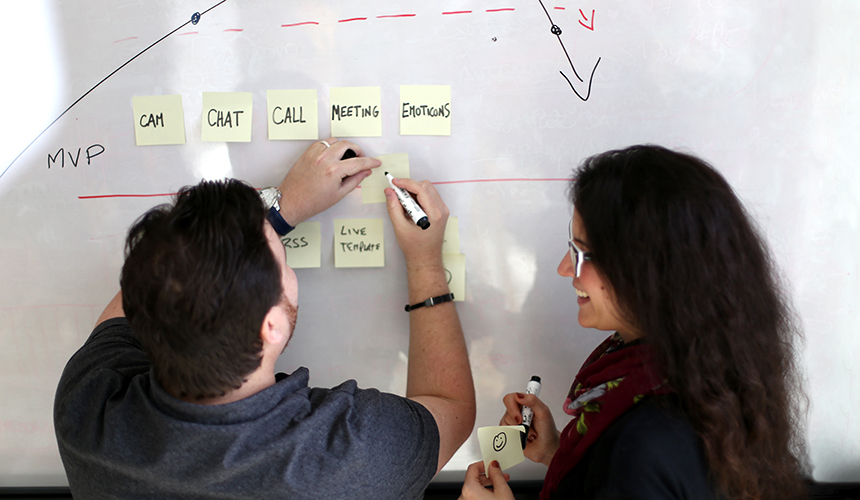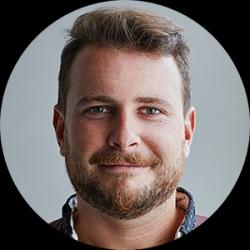How does UX work inside the development of a software project? In this article I will try to cover the main aspects of how we at Making Sense work following our Development Framework throughout the Discovery phase from the User Experience point of view.
The discovery helps define the scope of the product and the terms of the project we will embrace. But first, let me start from the beginning.
What does a UX designer do?
Over the last 10 years, the way the world sees a UX designer has been constantly changing. I started to see that most of the successful companies in the product development business were beginning to include designers in their businesses’ decision-taking processes. As time went on, designers got a place on the business side instead of being just executors of ideas. The way that we as designers understand business and products started to be a very expensive intellectual value at this point, providing a competitive edge in a market where being competitive is not an easy task.
Nowadays, it’s hard to conceive of a company that actually wants to build products without a UX designer included in the big round table – and UX designers’ active business role has only been increasing over the years.
Although the phrase “user experience” has become trendy and something of a buzzword in the last couple of years, the way companies understand and apply UX is pretty different from one business to another. For this reason, I want to share with you a series of posts to explain in a simplified way how the design team works inside Making Sense’s Product Creation Process, beginning with discovery.

Defining the discovery process
This is the first phase where the first touch happens. The client has an opportunity to meet our team, and we start to get to know each other. In this early phase of a project, we help define the product scope. In other words, we help the client move their ideas to paper, form tangible goals and give shape to the product that our team will be developing.
During this 2 to 3 week process, our UX designers conduct several techniques to better understand the client, their business, the product, the problem it solves and, finally, their users. Our goal is to finish this phase being perfectly aligned with the client, their business and their vision of it. In addition, we deliver documentation about the project scope, a list of requirements, team size, timesheets, wireframes and mockups. From the UX perspective, the discovery process has three different phases: analysis, ideas and planification.
Phase 1 – Analysis
We want to know all about you
During this first step, we get involved in the client’s world. We start a conversation, conducting some exploratory activities and research to better understand them and their needs. We learn what sets their products or services apart from their competitors’ and listen to their ideal success story. In addition, we detect pain points and other issues that need to be addressed through the software product. To accomplish this, we gather and analyze all the information that the client may have available, such as metrics, previous tests, mission and vision statements, requirements and features, among others.
Techniques involved:
Competitive Audit, Stakeholders Interviews and KPI Setups, List of Requirements, Measurements analysis, Heuristic evaluation, Flow analysis.
Phase 2 – Ideas
We want to figure out the solution
In Phase 2, we identify the product’s core users and their specific needs to get a better idea of how to create the ideal UX and overall piece of software. First, we detect the key features and every problem that needs to be solved, as well as find key opportunities to build a successful product. With these processes, we start defining the MVP and project scope and we begin putting the project into a tangible state, creating sketches, flows and sitemaps, among other assets. With these definitions and the first sketches of the product on the paper, we work closely with the client in order to further shape the ideal solution that will meet user needs.
Techniques and deliverables involved:
Multidisciplinary brainstorming, Sitemap, flows, User Testing and User Testing Reports, Documentation of personas, Feature writing, Metrics and analytics.
Phase 3 – Planification
Insights, ideas and solutions
Phase 3 in the discovery process is when things really begin to take shape. Visualizing key opportunities previously identified and research starts with a full ideation session. This is the moment when all the team gets together and the challenge begins. It’s time to solve the client’s issues, focusing on getting the best product possible from each point of view: technical, business, project management and user experience. It’s important that all project stakeholders are able to have their say at this point in the discovery process, so our team is in the best position to create the most impactful piece of software possible for our client.
Techniques and deliverables involved:
Project planning and timeframe, Team configuration, Ideas, Storytelling, Low Fidelity Wireframes, Sketches, User Flows, Blueprints, Storyboards, Taxonomies.
Where we go from there
Once our team has completed the discovery phase and the client is satisfied with the direction of the project, we can begin work on the nuts and bolts of software development. Stay tuned for our next installment in this series covering the development process, where the rubber really meets the road.
